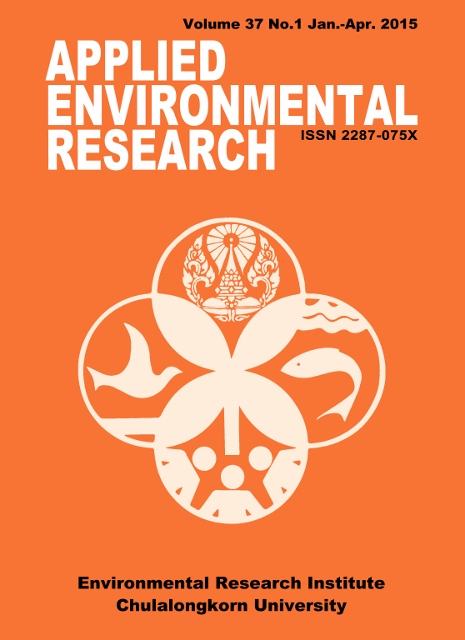Satoyama Agricultural Development Tool (SADT) for Collaborative Assessment of Hilltribe Communities in Chiang Mai: Case Studies of Mueang Ang, Nhong Lom and Pa Kea Noi
Main Article Content
Abstract
The Satoyama Agricultural Development Tool (SADT) is based on five perspectives identified by the International Partnership for the Satoyama Initiative (IPSI). To determine its efficiency in indigenous communities, case studies were undertaken in three hilltribe com-munities: Mueang Ang, Nhong Lom and Pa Kea Noi, located in the province of Chiang Mai, northern Thailand. Satoyama analysis was conducted in each village by officers attached to the Royal Project Foundation (RPF) and the Highland Research and Development Institute (HRDI) operating out of the stations of Inthanon and Mae Hae. These were compared with similar analysis done by villagers of each village studied. Results showed uniformity amongst villagers, and amongst officers. No statistical differences were obtained when analysis between officers and villagers were compared, demonstrating that if persons are exposed to the same data and experiences within a given locale, they would produce similar evaluations when using the tool. Further, because villagers are capable of auto-evaluation, it is an indication that the tool should be simplified to facilitate ease of use. We were able to conclude that the SADT allows evaluation of the extent to which the perspectives of Satoyama are met in any given community. It is diagnostic in nature and would set the stage for a systematic and scientific approach that should be employed to advance sustainable agricultural development in the community, premised on its local culture and characteristics. The staff attached to the RPF has opted to use the tool as a means of evaluating progress in hilltribe communities affiliated to it.
Article Details

This work is licensed under a Creative Commons Attribution-NonCommercial 4.0 International License.
Published articles are under the copyright of the Applied Environmental Research effective when the article is accepted for publication thus granting Applied Environmental Research all rights for the work so that both parties may be protected from the consequences of unauthorized use. Partially or totally publication of an article elsewhere is possible only after the consent from the editors.

